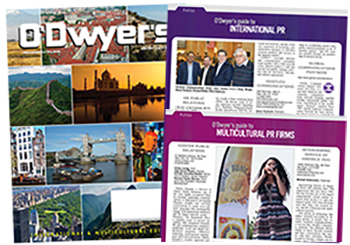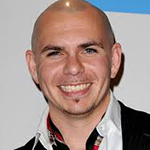|
|
We’ve all heard the phrase “diversity matters.” We’ve read articles, attended training sessions and asked friends of color uncomfortable questions about their beliefs and backgrounds. Without a doubt, understanding and embracing different cultures, races and beliefs enriches our work and should add value to what we offer our clients or companies.
For many, the challenge is figuring out how to go beyond periodic insightful conversations and annual diversity training sessions and conferences. How do you embed diversity and inclusivity into your daily workplace practices and culture?
|
|
Here’s something to remember that often is so easy to forget: this issue never ends for professionals of color. We live this every day. Too often in the workplace, diversity and inclusivity is an afterthought, a special project or an immediate reaction to some current event or employee complaint. If we can make this commitment a part of our daily lives at work and elsewhere, one day we will view diversity and inclusion as an asset and not another problem.
I do not have all the answers, but if your organization is working on diversity and inclusion initiatives, here are a few things for you to think about.
Don’t just check the box
Undoubtedly, our industry needs more diversity. Avoid the trap of hiring a person of color to fill a quota or to reach a mandated goal included in the company’s strategic plan (or a company requirement). You might be successful in attracting some professionals with that mindset, but good luck retaining them. People want to be valued and can sense when you are making them your “token” minority hire.
It’s good practice to let candidates know that you are excited about having different backgrounds and perspectives around the decision-making table. But make sure these aren’t just words. You might have to rethink who to invite to your meetings. For example, if you are having a meeting with all middle-aged white men, you should consider adding or replacing attendees to ensure that you are getting multiple perspectives—age, gender, race, etc. Even when well-intentioned, this will be difficult to implement. It requires a conversation with your leadership and staff so they will understand why your meetings will look a little different.
When done successfully, inviting diverse perspectives to the decision-making table releases the creative and productive energy of the group.
You can’t solve ‘the problem’
Communications professionals love having the right answers and solving clients’ problems. Often, we have this same mindset when the issue of diversity and inclusion arises. Most of us want to do better. We want to help eliminate disparities. We want to have a more diverse workplace. We want to embed solid communications and engagement strategies into a plan that reaches diverse audiences.
I suggest that you stop thinking of this issue as a problem or challenge. It’s an opportunity. I’ve been fortunate enough to work in diverse workplaces where diversity and inclusion are viewed as opportunities for creativity, innovation and acceleration.
When working with clients, I urge them to communicate and engage with diverse audiences in ways that are respectful, authentic and meaningful. It will take more than translating documents or placing articles in language-specific publications. I suggest that it will require asking questions and finding out what really resonates in different communities.
This makes the work fun and fresh. It might mean adding a step in your work plan to listen and engage diverse individuals and communities. The extra work will benefit you and your clients in the long run by having authentic and timely information that can be used to differentiate communication strategies to your varied audiences. Striving to operate in an inclusive way will lead to a sustainably more diverse group of colleagues (and clients).
It’s more than diversity training
Many companies identify cultural competency training as a vital step in a professional’s journey to be more inclusive and open to diverse backgrounds, beliefs and races. I agree that it is helpful, but would argue that much more should be done to make your workplace inclusive.
Find ways to make your workplace comfortable, open and fun. The best way to get this started is to privately ask your staff what they need in place to be successful. Also, ask them what they consider to be barriers to progress. Be prepared to receive tough feedback. As your diverse colleagues gain your trust, it will be easier for them to have an honest conversation with you. These discussions might be difficult and that’s a good thing because you will be addressing their truths and perceptions.
It’s a great practice to go find out which corporations and organizations are thriving in their diversity and inclusion efforts. Why create when you can replicate? You will be surprised by the ideas and changes that some will suggest. Remember to circle back with your staff so they know that you heard their concerns and ideas and are serious about rethinking what you are currently doing.
Here’s one suggestion: Ask your white employees to imagine coming to work as the only white person on staff. How would that feel? How differently would they approach work?
Focus on retaining as well as recruiting
Retention can be much more difficult than attracting talent. Often, relationships matter just as much as pay and benefits. People love feeling like they are part of a team. Keeping top talent is key to the success of your company.
A common mistake that leaders make is to oversell their commitment to inclusiveness and diversity while they are recruiting professionals. It works for a while, but when the honeymoon is over, it can easily backfire on you. It’s better to be honest. If you have lots of work to do to become inclusive, acknowledge that you are committed to it, put a plan together and execute. Most professionals of color understand that there’s a journey to “getting it” and will applaud genuine effort. Trust me. Just ask them!
***
Stan Alleyne is a senior consultant at Tunheim, a communications consulting firm in Minneapolis.

 Stan Alleyne
Stan Alleyne

 Jackeline Stewart-Hawkins has joined BCW as executive VP and leader of its polycultural consulting unit.
Jackeline Stewart-Hawkins has joined BCW as executive VP and leader of its polycultural consulting unit. Gen Z Latinos are on their way to becoming the main engine of population and economic change in the U.S. within the next decade. Communicators are taking notice.
Gen Z Latinos are on their way to becoming the main engine of population and economic change in the U.S. within the next decade. Communicators are taking notice. The Axis Agency, which launched in 2005 as Weber Shandwick’s multicultural marketing unit, is now an independent and minority-owned shop as CEO Armando Azarloza and COO Carmen Lawrence have acquired the brand from Interpublic.
The Axis Agency, which launched in 2005 as Weber Shandwick’s multicultural marketing unit, is now an independent and minority-owned shop as CEO Armando Azarloza and COO Carmen Lawrence have acquired the brand from Interpublic. Multicultural audiences account for almost 40 percent of the U.S. population, yet multicultural media buys made up only about five percent of the total ad and marketing revenues in the U.S. last year, according to a report.
Multicultural audiences account for almost 40 percent of the U.S. population, yet multicultural media buys made up only about five percent of the total ad and marketing revenues in the U.S. last year, according to a report. Horizon Media and hip-hop artist Pitbull have joined forces to start a marketing agency aimed at the multicultural market.
Horizon Media and hip-hop artist Pitbull have joined forces to start a marketing agency aimed at the multicultural market.


 Have a comment? Send it to
Have a comment? Send it to 
No comments have been submitted for this story yet.